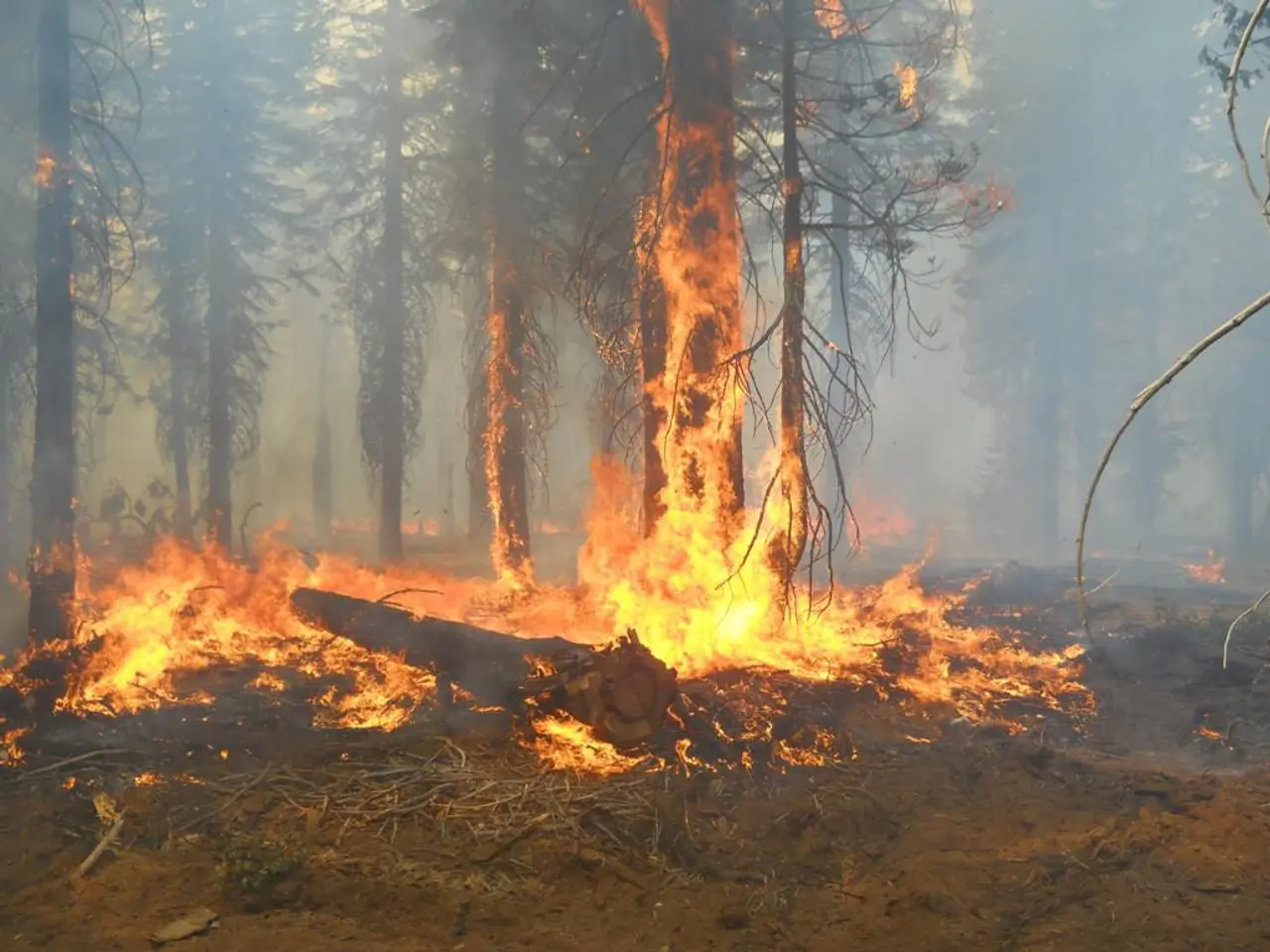Firefighters Surpressed by Lack of Personnel, Forced to Perform Toilet Cleaning Amidst Intensified US Wildfire Outbreak
Staffing Crisis in the US Forest Service Affects Wildfire Response
In the face of an unprecedented wildfire season, the US Forest Service (USFS) is grappling with a significant staffing shortage. With over 5,100 firefighting positions vacant, the service is struggling to keep up with the growing number of wildfires.
In 2025 alone, 41,069 wildfires have burned almost 2.9 million acres of land, surpassing the 10-year average for the number of fires[1]. The USFS currently manages 193 million acres of land with 35,000 employees, which equates to one employee for every 5,500 acres[2].
This under-staffing has weakened forecasting, planning, and firefighting capabilities, forcing less experienced crews into high-risk situations[1]. As a result, firefighting resources cannot keep pace with fast-growing wildfires, leading to more extensive property and ecological damage and necessitating mass evacuations[1][2].
Lack of leadership and middle management forces inexperienced personnel into dangerous roles, elevating hazards for crews on the front lines[1]. Remaining firefighters face longer deployments and higher fatigue levels, raising risks of injury and burnout[1][3].
Operational challenges are mounting as the USFS Chief acknowledged in a July 2025 internal memo, indicating resource demands outpace availability and considering calling on non-firefighting HR staff and recently departed qualified personnel to supplement firefighting efforts[2].
This staffing shortage stems from cuts and voluntary buyouts mainly during prior federal administrations, which eliminated more than 7,500 essential employees[1][2][4][5]. About 5,000 USFS employees took voluntary buyouts this year, and 3,400 probationary staff were laid off in early 2025[2].
However, there have been efforts to address the staffing shortage. The USFS has hired over 11,000 wildland firefighters and is working to rehire laid-off fire-qualified personnel[2]. The Merit Systems Protection Board ruled in March 2025 that thousands of these layoffs should be reversed[2].
Senators Martin Heinrich and Rep. Gabe Vasquez are calling for full reinstatement of laid-off workers and additional hiring[3]. USFS Chief Tom Schultz plans to rehire 1,400 previously laid-off but fire-qualified personnel[2].
Despite these efforts, operational readiness is falling behind. Crews are lacking food and medical supplies during fires, and trained firefighters are being assigned administrative desk work instead of being deployed to fires[2].
The staffing crisis in the USFS is a pressing issue that requires immediate attention. The growing number of wildfires and the severity of the wildfire season, driven by climate change and hotter, drier conditions, demand a fully staffed and effective firefighting force[1][2][4][5].
[1] Associated Press. (2025, July 20). Understaffed U.S. Forest Service faces record wildfire season. Retrieved from https://apnews.com/article/climate-and-environment-wildfires-national-forests-fires-public-lands-environment-and-nature-224c5f3903437c6818756a8f65f92d5d
[2] Reuters. (2025, July 22). U.S. Forest Service understaffed, faces record wildfire season. Retrieved from https://www.reuters.com/business/environment/us-forest-service-understaffed-faces-record-wildfire-season-2025-07-22/
[3] The Hill. (2025, July 23). Lawmakers call for full reinstatement of laid-off US Forest Service workers. Retrieved from https://thehill.com/policy/energy-environment/3725890-lawmakers-call-for-full-reinstatement-of-laid-off-us-forest-service-workers
[4] National Interagency Fire Center. (2025). Wildland Fire Facts. Retrieved from https://www.nifc.gov/fireInfo/fireInfo_statistics_facts.html
[5] US Forest Service. (2025, March 15). Merit Systems Protection Board ruling on USFS layoffs. Retrieved from https://www.fs.usda.gov/detail/r9/news-events/news-releases/aspxarticleid=55101
- The US Forest Service (USFS) staffing shortage is a concern, especially given the increasing focus on Environmental, Social, and Governance (ESG) reporting in the face of climate-change and its impact on environmental science, necessitating a fully staffed and effective firefighting force.
- The USFS's inability to keep up with the growing number of wildfires due to staffing issues has raised concerns in politics and policy-and-legislation circles, with some calling for the reinstatement of laid-off firefighters to address the crisis.
- In the midst of a staffing crisis, the USFS is struggling to maintain proper supplies for its fire crews, a critical oversight in the light of the general news coverage highlighting the urgency of the climate-change induced wildfire situation.
- Scientists in the field of environmental-science point out that the USFS's understaffing has weakened its forecasting, planning, and firefighting capabilities, making it less effective in mitigating both property and ecological damage from wildfires.
- Non-governmental organizations (NGOs) dedicated to environmental issues and climate-change are paying close attention to the staffing crisis in the US Forest Service, recognizing the potential long-term impact of the shortage on the health of forested regions and the overall environment.




